Shropshire’s scenic countryside and historic towns and villages have been the inspiration for some of the nations’ greatest writers and poets across many different genres; from romance and historical drama to whodunits.
You will find Shropshire cropping up in many famous authors’ works – A E Housman, D H Lawrence, Jane Austen and Charles Dickens have all used this beautiful county to symbolise rural isolation and tranquillity.
We’ve rounded up the top places for you to discover Shropshire’s remarkably rich literary heritage. So why not come and experience Shropshire’s bucolic rolling fields, dramatic wild hills and traditional market towns, and discover some Shropshire literary connections for yourself?
Take a trail
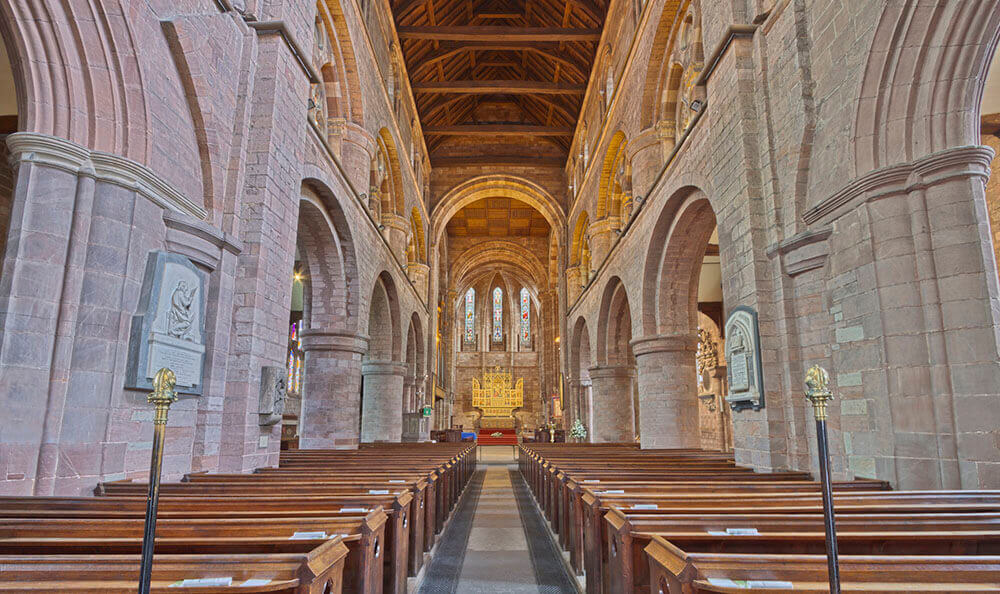
Shrewsbury Abbey, fictional home of Brother Cadfael, by Michael D Beckwith
Literary Britain has its fair share of master criminals and super sleuths. Fans of Ellis Peters’ medieval whodunits, The Chronicles of Brother Cadfael, should head for the town of Shrewsbury and the Shropshire countryside. Look out for the metal footprints ingeniously scattered around Shrewsbury to mark Cadfael sites – a Brother Cadfael tour here is a delightful mixture of fact and fiction. With its picturesque towns and historic castles and abbeys, Shropshire certainly provides an apt setting for the adventures of a Benedictine monk. The characters in the stories may have travelled on horseback but these days, you can follow the car trails to fully explore the area – visit the Tourist Information centre in Shrewsbury for details. There is a memorial to Ellis Peters, whose real name was Edith Pargeter (1913 -1995), at Shrewsbury Abbey.
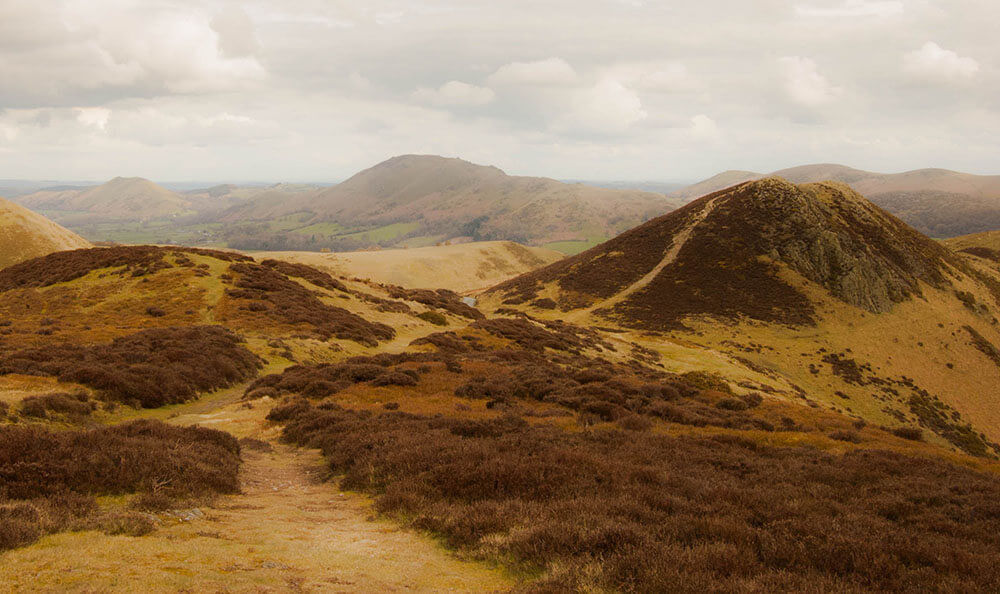
Path along the Long Mynd by Jonathon Meddings
Shropshire author, Mary Webb (1881 – 1927), reflects her passionate love for her county in her poems and novels, the most famous of which Gone to Earthwas made into a film in 1950. Born near Shrewsbury in the village of Leighton, she moved around a lot, living in Much Wenlock, Pontesbury, Shrewsbury and Lyth Hill. A series of trails wind through many of the places featured in her works, including Wroxeter, The Long Mynd and Church Stretton.
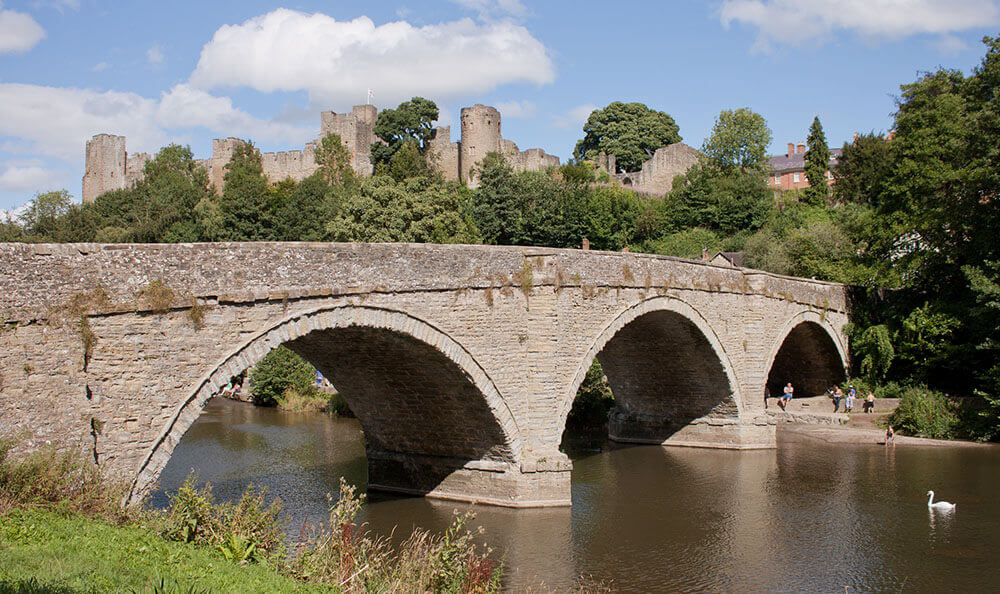
Ludlow by Lukes_photos
Alternatively, equip yourself with a map and a copy of A Shropshire Lad and discover Housman country in southern Shropshire, still one of the most beautiful, untouched areas in England. If you fancy a trip to ‘the quietest places under the sun’, head for the lyrically named exquisite villages of Clunton, Clunbury, Clungunford and Clun. Alfred Edward Housman (1859 – 1936) loved this idyllic, sleepy county, visited whenever he could and produced poems rich with affection for the rural life he found there. ‘What are those blue remembered hills/What spires, what farms are those?’ he wrote in A Shropshire Lad, his most famous 1896 collection. Housman’s ashes are buried at St Laurence’s Church in gastronomic Ludlow. Set among ‘those blue remembered hills’ Ludlow is often called the most attractive market town in the country and well worth a visit.
Other Shropshire Literary Connections
It was Clunton that drew Look Back In Anger playwright John Osborne (1929 – 1994) for the final years of his life. He is buried beside his wife Helen in the churchyard at Clun; each have unexpectedly odd epitaphs selected from Osborne’s plays.
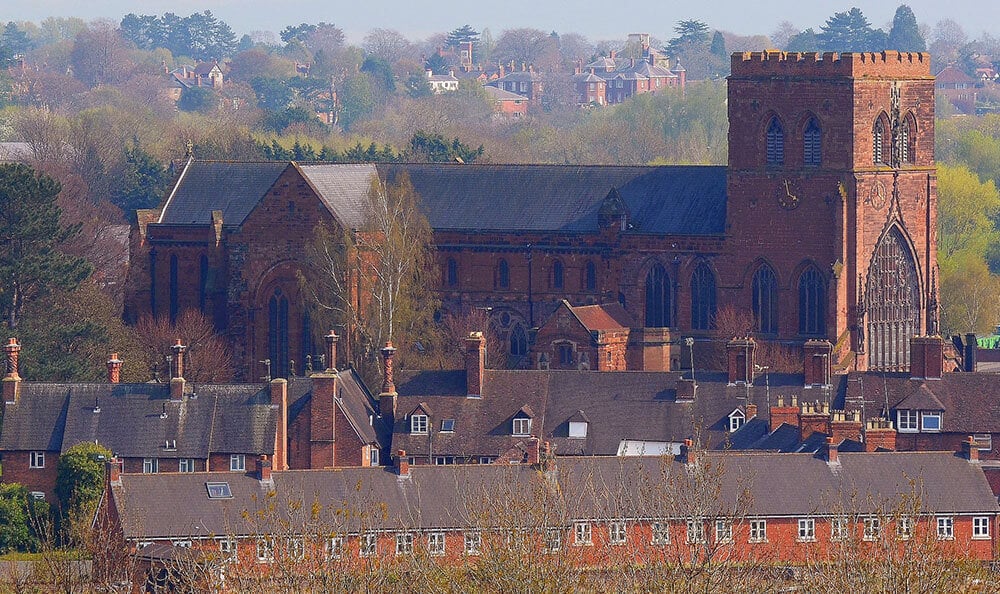
Shrewsbury Abbey by Micolo J
Regarded as the finest war poet of his generation, Wilfred Owen (1893 – 1918) was born in Oswestry and grew up in Shropshire. He spent his teenage years in Shrewsbury, joining the Artist’s Rifles in 1915. The horrors of trench warfare, which he experience in the Somme offensive of 1916 produced vivid poems of the highest quality including Dulce et Decorum Est, Strange Meeting and Anthem for Doomed Youth. Owen was killed in action, just one week before the Armistice. He has his own memorial in the grounds of the Abbey at Shrewsbury, and Oswestry town green is named after him.
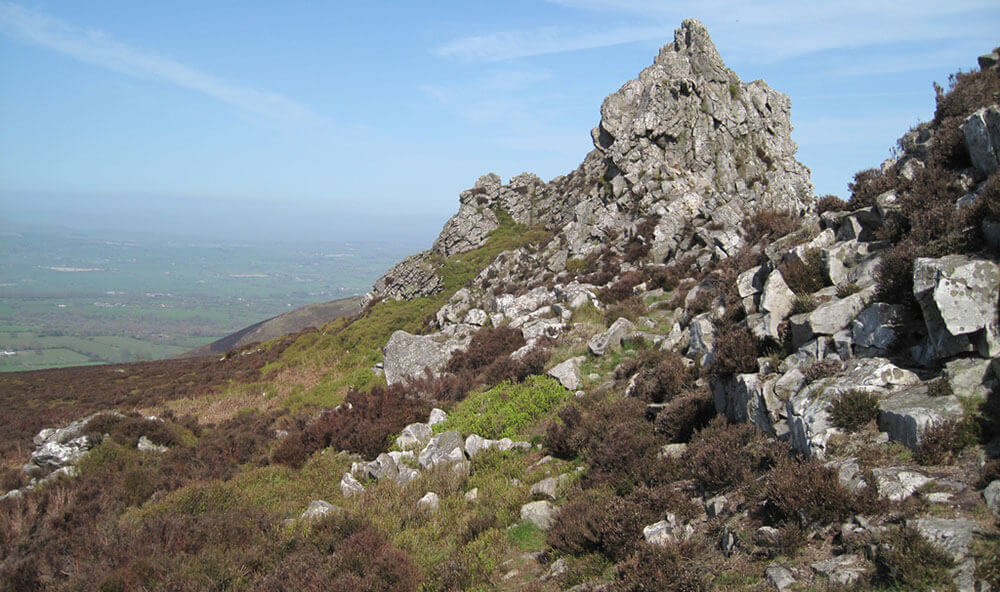
Devil’s Chair, Stiperstones by Ian Griffiths
D H Lawrence (1885 – 1930) wrote of a sense of evil and foreboding in his novel St Mawr. He was referring to the Devil’s Chair on the Stiperstones. Even to this day it remains a wild and frightening place.
‘The nearest earthly place to paradise’ is how P G Wodehouse (1881 – 1975) describes Shropshire. He set Blandings Castle in this neck of the woods – at Weston Park to be precise – but he could equally have chosen Attingham, Hawkstone Hall or Powis Castle. Wodehouse loved the area and said ‘I rashly placed Blandings Castle in Shropshire because my happiest days as a boy were spent near Bridgnorth’. He is also known for his Jeeves and Wooster stories.
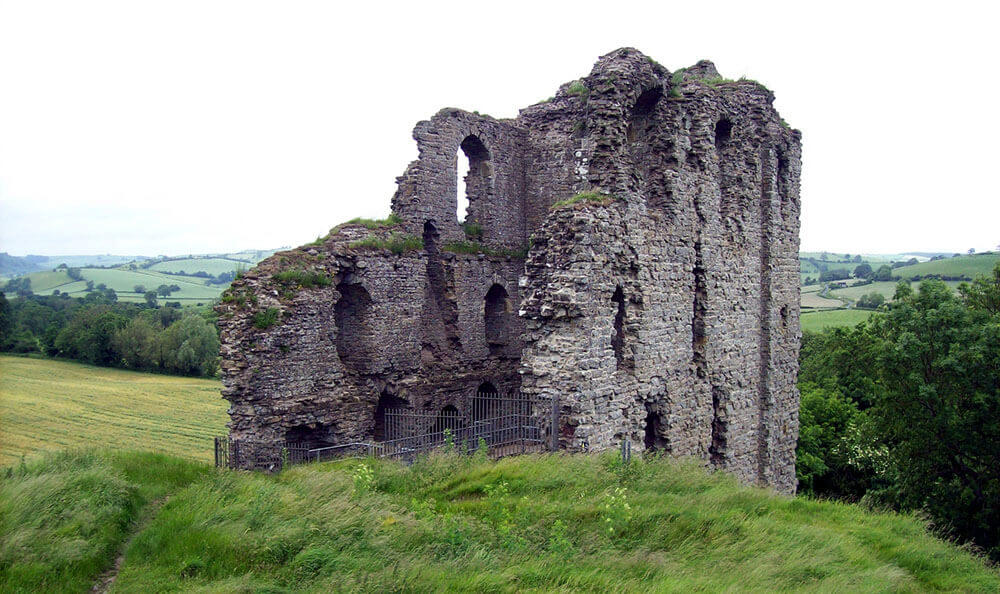
The ruins of Clun Castle by Freddie Phillips
E M Forster (1879 – 1970) who wrote the novel Howard’s End transformed the Shropshire town of Clun into Oniton.
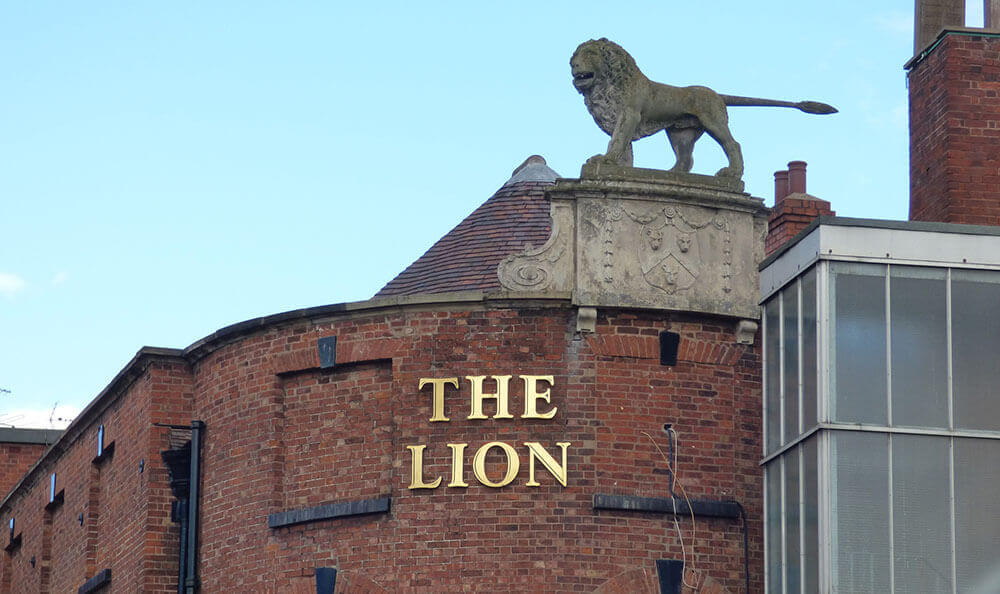
The Lion Hotel by Elliott Brown
Charles Dickens (1812 – 1870) stayed in Shropshire many times and wrote about the Lion Hotel, on Shrewsbury’s Wyle Cop, and of the Wroxeter Roman city. He regularly drew names and places from his surroundings to use in his books. Miss Havisham from Great Expectations is said to have been based on Elizabeth Parker at Chetwynd Hall. You can also find Little Nell from The Old Curiosity Shop buried in Tong churchyard.
Father to the famous Brontë sisters, Patrick Brontë (1777 – 1861) was actually a curate at the All Saints Church in Wellington. Here he wrote two large volumes of poetry probably inspired by his surroundings.
Creator of the first dictionary, Samuel Johnson (1709 – 1784) travelled through Shropshire en route to North Wales. He stopped off at Hawkstone Park, where he waxed lyrical on the caves, grottos and follies.
Still inspiration today
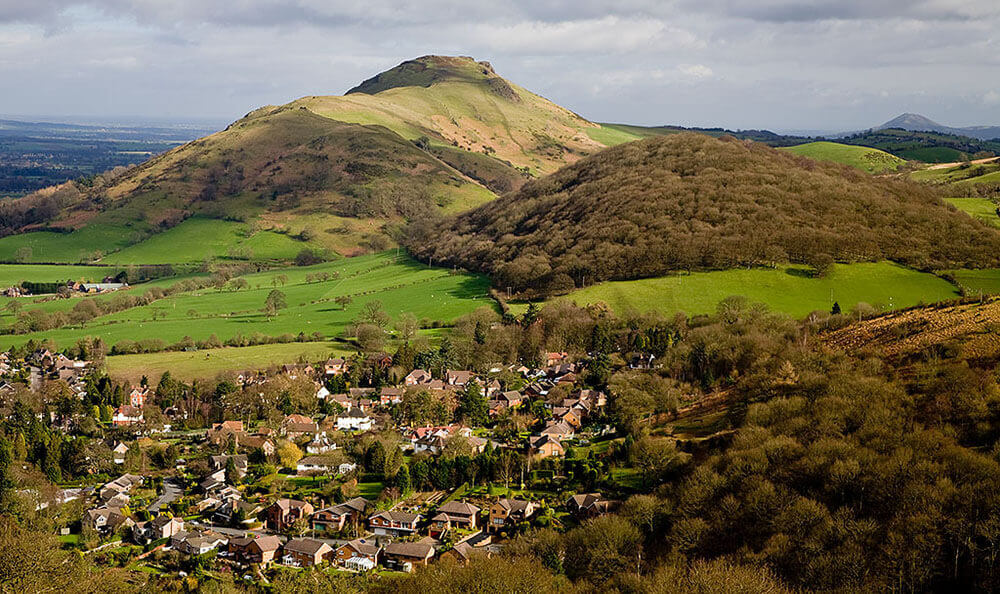
Caer Caradoc by David Evans
Childrens’ author Catherine Cooper, from Wellington, has been hailed as the next J K Rowling after the huge international success of her Jack Brenin fantasy adventure series. She uses real Shropshire locations in her books and is one to watch. The first book of four in the series, The Golden Acorn, won a Brit Writers’ Award in 2010 and this year Catherine has signed the movie rights… so we could see Jack Brenin come to life, maybe in Shropshire!
At the movies
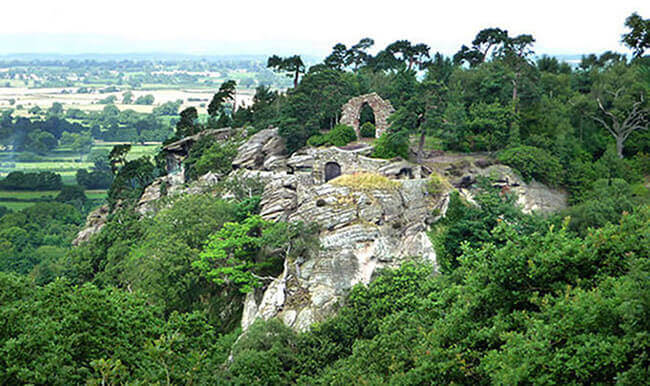
Grotto Hill, Hawkstone Park by Chris Gunns
In 1988, a TV adaptation of CS Lewis’ classic story The Chronicles of Narnia was filmed at Hawkstone Park in Weston-under-Redcastle. The park’s historic and stunning follies, featuring a series of tunnels, grottos and arches set amid the beautiful Shropshire landscape, made the perfect backdrop for Narnia.
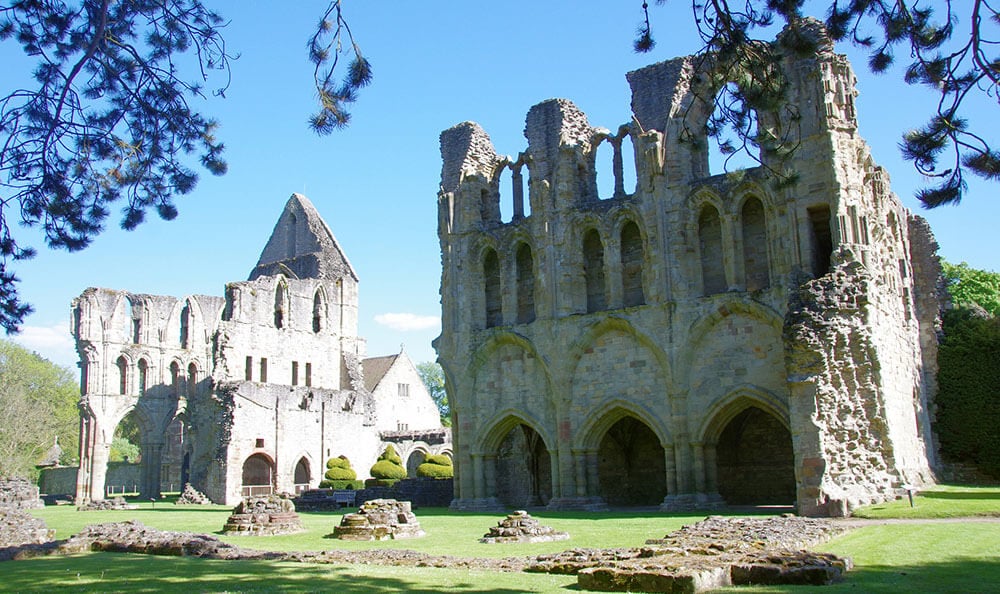
Much Wenlock Priory by Donald Judge
Much Wenlock and its surrounding area were chosen as the location for the filming of Mary Webb’s novel Gone to Earth (1950). The home of the lustful Squire Reddin was Longner Hall in Shrewsbury.
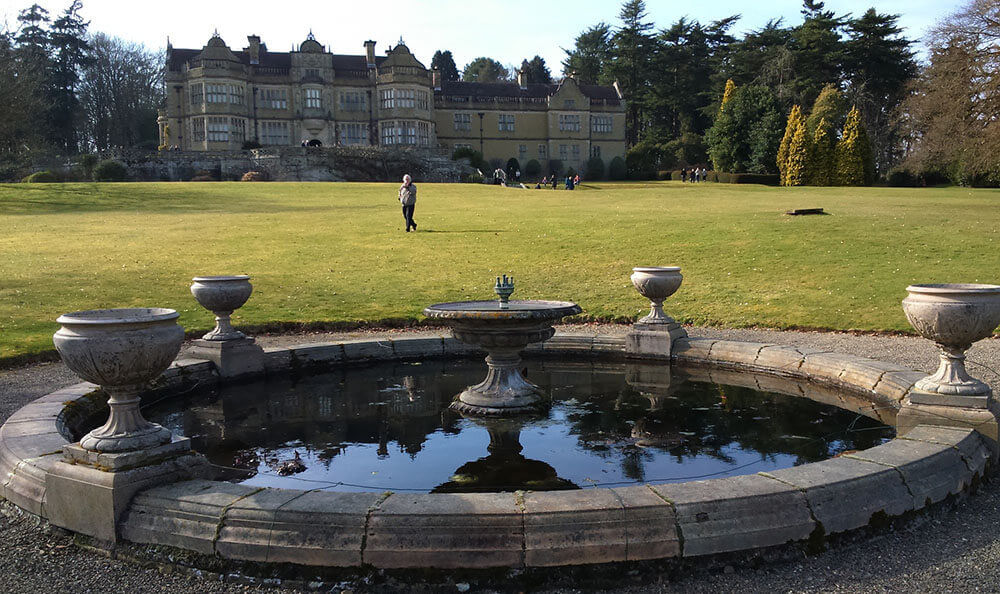
Stokesay Court by Shropshire & Telford TSB
Stokesay Court, near Ludlow was used as the home of the Tallis family for the film adaptation of Ian McEwan’s best selling novel Atonement. Since the film’s release in 2007, Stokesay Court have been offering tours of the house, giving visitors a behind-the-scenes view of the film’s setting.
Literary Festivals in Shropshire
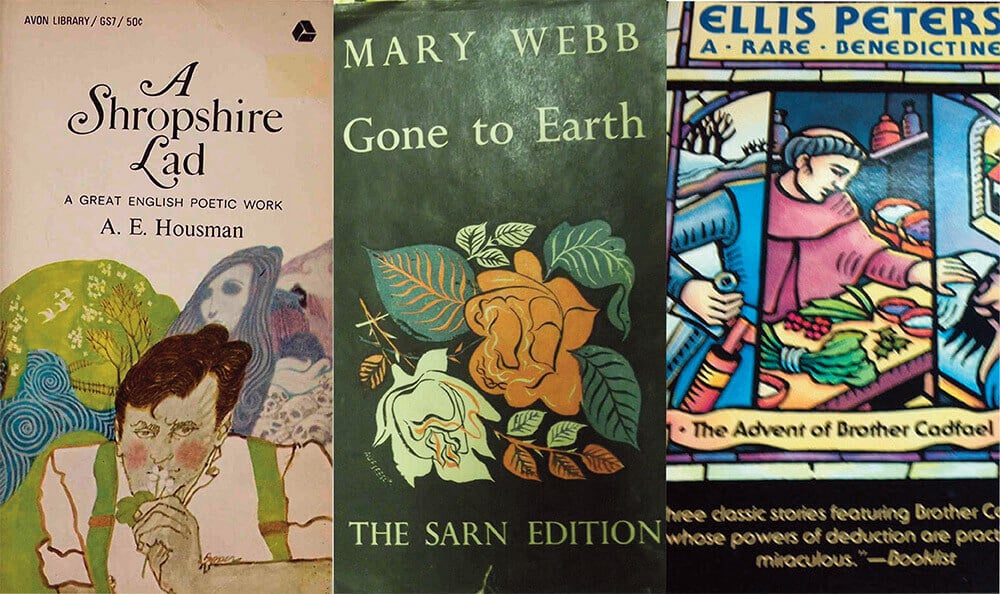
If you love books, you’ll love Shropshire’s literary festivals! Here’s the low down on how you can get your festival fix…
March
The Oswestry LitFest, Oswestry.
April – May
Shrewsbury Children’s Bookfest, Shrewsbury.
Wenlock Poetry Festival, Much Wenlock.
October
Wellington Literary Festival, Wellington.
November
Shrewsbury Festival of Literature.
What else?
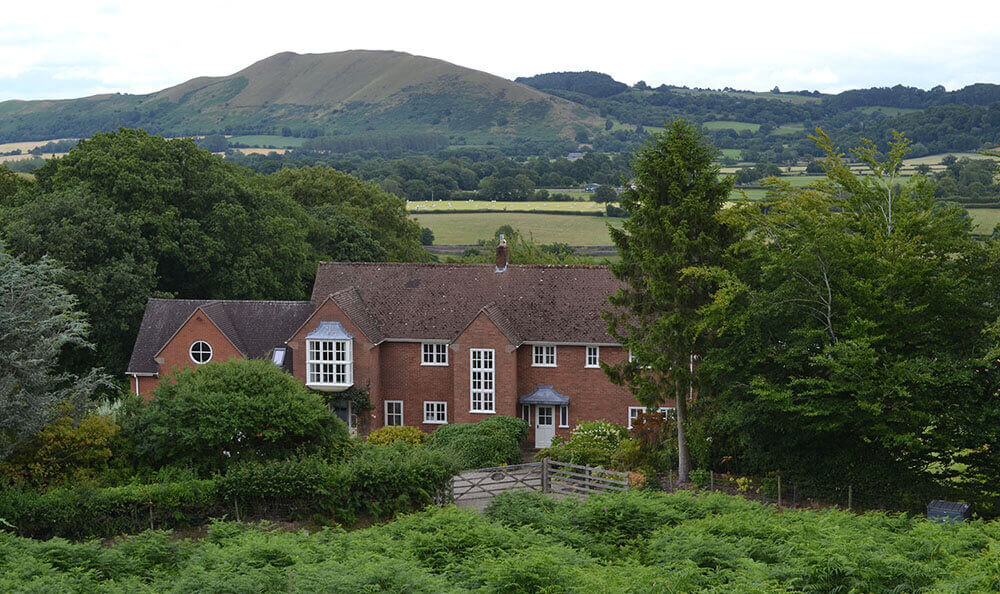
The Oaks holiday cottage near Church Stretton
If our Shropshire Literary Connections have stirred your appetite for a literary adventure, why not explore our luxury self-catering holiday cottages in Shropshire?
Published on Sunday 19th July 2020 by Linnie Clements


Follow us on social media